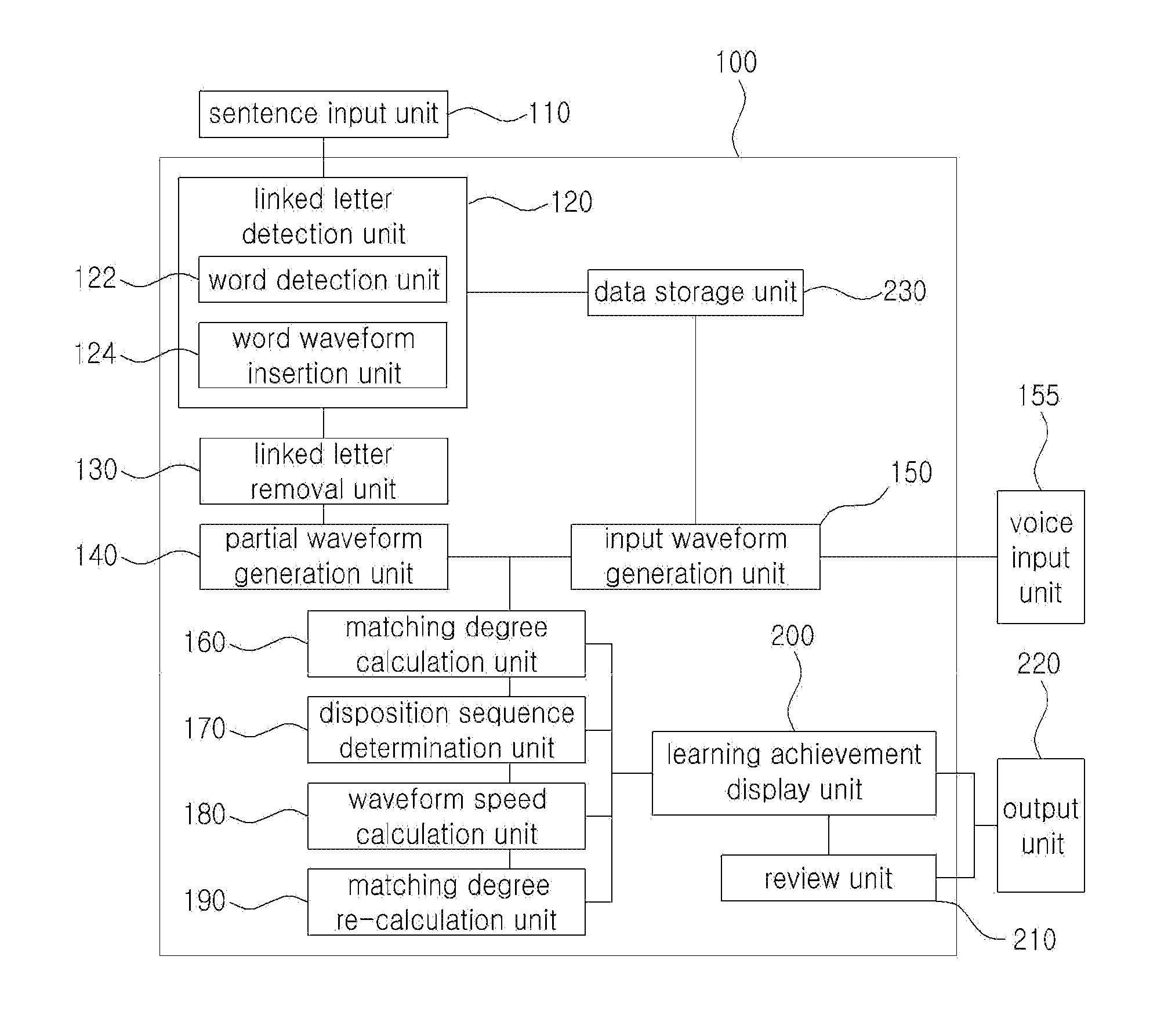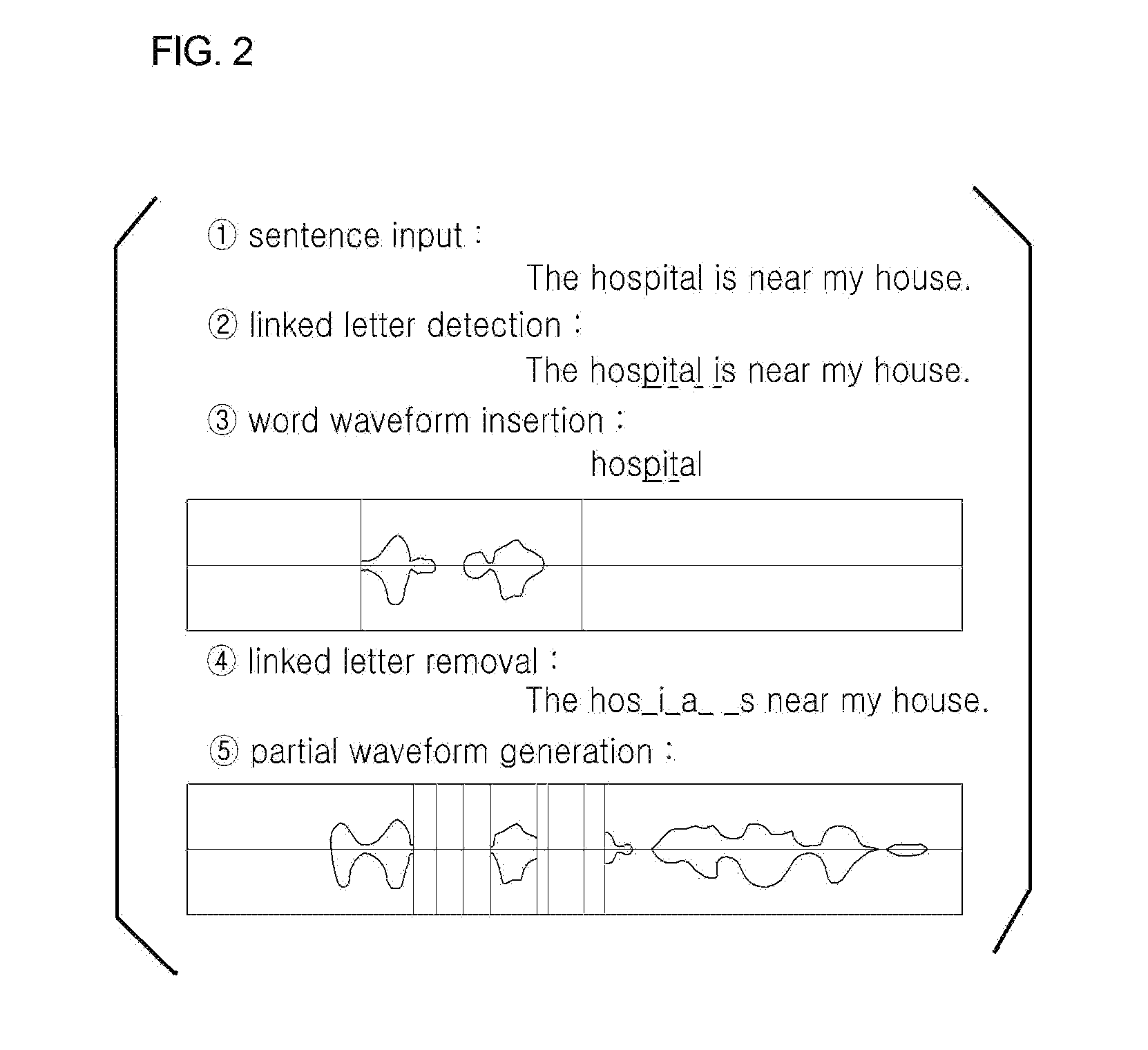Foreign language learning apparatus and method for correcting pronunciation through sentence input
a technology of foreign language learning and input, applied in the field of foreign language learning apparatus and method for correcting pronunciation through sentence input, can solve the problems of difficult to expect correct evaluation of characteristic data extracted via am or voice, high cost of english learning, and limited learning of english
- Summary
- Abstract
- Description
- Claims
- Application Information
AI Technical Summary
Benefits of technology
Problems solved by technology
Method used
Image
Examples
Embodiment Construction
[0049]Embodiments of a foreign language learning apparatus and method for correcting pronunciation through sentence input according to the present invention will be described below with reference to the accompanying drawings.
[0050]The present invention relates to a foreign language learning apparatus and method using a function of reading an input sentence in voice via a TTS engine.
[0051]FIG. 1 is a block diagram of a foreign language learning apparatus 100 for correcting pronunciation through sentence input according to an embodiment of the present invention, and FIGS. 2 and 3 are diagrams showing examples in which the foreign language learning apparatus 100 for correcting pronunciation through sentence input according to an embodiment of the present invention is operated.
[0052]Referring to FIGS. 1 to 3, the foreign language learning apparatus 100 for correcting pronunciation through sentence input according to the present invention includes a sentence input unit 110, a linked lett...
PUM
 Login to View More
Login to View More Abstract
Description
Claims
Application Information
 Login to View More
Login to View More - R&D
- Intellectual Property
- Life Sciences
- Materials
- Tech Scout
- Unparalleled Data Quality
- Higher Quality Content
- 60% Fewer Hallucinations
Browse by: Latest US Patents, China's latest patents, Technical Efficacy Thesaurus, Application Domain, Technology Topic, Popular Technical Reports.
© 2025 PatSnap. All rights reserved.Legal|Privacy policy|Modern Slavery Act Transparency Statement|Sitemap|About US| Contact US: help@patsnap.com



